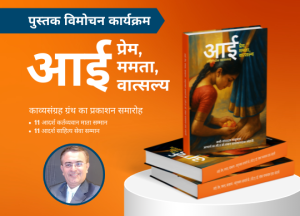The solar mission Aditya-L1 is slated to launch on Saturday at 11:50 IST from the launch pad at Sriharikota. The launch rehearsal and internal vehicle checks have both been finished.
The Indian Space Research Organisation (ISRO) is prepared for the nation’s first solar mission, Aditya-L1, after successfully deploying a lander in the unexplored South Pole region of the moon.
The launch rehearsal and internal vehicle checks for the solar mission have been finished, and the launch is planned to take place on Saturday at 11:50 IST from the launch pad at Sriharikota.
The PSLV-C57 will launch Aditya-L1, India’s first solar space observatory. Seven distinct payloads, including four that will observe the sun’s light and three that will measure in-situ plasma and magnetic field parameters, will be carried on board to conduct a thorough study of the sun.
The Visible Emission Line Coronagraph, or VELC, is the largest and most difficult payload aboard Aditya-L1. In cooperation with ISRO, VELC was integrated, tested, and calibrated at the Hosakote CREST (Centre for Research and Education in Science Technology) site of the Indian Institute of Astrophysics.
Lagrangian Point 1 (L1), which is 1.5 million kilometres from the Earth in the direction of the sun, will be the object of Aditya-L1’s halo orbit. The anticipated time for completion is four months.
Aditya-L1 will be able to continually watch the sun from this advantageous location without being constrained by eclipses or occultation, enabling researchers to track solar activity and its effects on space weather in real-time. The data from the spacecraft will also contribute to a fuller understanding of space weather factors and help pinpoint the series of processes that lead to solar eruptive events.

The study of the physics of the solar corona and its heating mechanism, the acceleration of the solar wind, the coupling and dynamics of the solar atmosphere, the distribution and temperature anisotropy of the solar wind, and the origin of CMEs, flares, and near-Earth space weather are some of the main goals of India’s solar mission.
During a total solar eclipse, we can see the sun’s atmosphere, or corona. According to the Indian Institute of Astrophysics in Bengaluru, a coronagraph, like the VELC, is a device that blocks out light from the sun’s disc and can constantly picture the much fainter corona.
India made a huge step forward on August 23 when the Chandrayaan-3 lander module successfully touched down on the moon’s South Pole, making it the first nation to accomplish the historic achievement and putting an end to the disappointment over the Chandrayaan-2 crash landing four years earlier. Overall, India became the fourth nation to make a successful landing on the moon, following the US, China, and Russia.
Following landing, the Vikram lander and Pragyan rover each had a specific duty to complete on the lunar surface, such as looking for sulphur and taking a relative temperature reading.
The lander and rover were to run for one lunar day after landing. 14 days on Earth are equivalent to one day on the Moon. India’s third lunar mission, Chandrayaan-3, had three stated goals: a soft and secure landing on the moon’s surface, rover motion, and in-situ scientific investigations.
The Chandrayaan-2 mission encountered difficulties during its soft landing on the lunar surface in 2019 and was ultimately determined to have failed its primary mission objectives. Chandrayaan-3 is the ISRO’s follow-up attempt.













